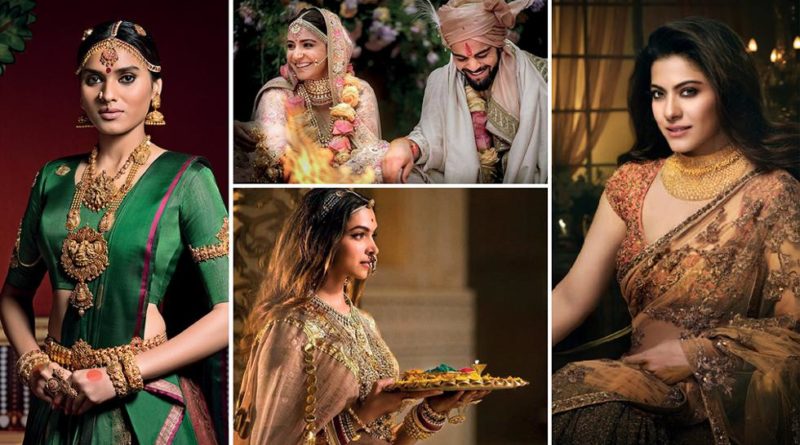Jewellery and Gems are an Integral Part of Indian Fashion
“Jewelry has the power to be that one little thing that makes you feel unique”
-Elizabeth Taylor
Be it any culture, jewelry has its own importance when it comes to appearance.
When we talk about jewelry, we mostly picturize a female figure but in Indian culture, jewelleries are important for both men and women.
Traditional jewelry of India makes its festivals and occasions uniquely beautiful. India is a land rich in precious metals and gems like Kohinoor. Dominating designs in Indian jewelry are mostly suitable for gold as India has always been considered as a rich land of gold or SONE KI CHIRIYA.
Most of the jewelry draw its inspiration from nature, temple or cultural beliefs. As instance Southern India has a dominant temple culture so jeweleries in south mostly has temple motifs, elephants or lotus while North India side has dominance of floral motifs, paisley(represents a cypress tree) or stylized fish motifs. Designs in the west part mostly consist of pearls and mirrors East side has a variety of beaded designs.
The most used techniques of jewelry making in India are Filigree (silver work), Meenakaari (designs are carved on metal and filled with bright colors) and Kundan work (engraving stones in metal carved design frames).
While men mostly wear accessories just on occasion, it has always been an important part of women’s attire throughout her life. Starting from her infancy, baby girls in India are gifted anklets in many regions. Apart from that earrings are something most of the females love to adorn. Coming to marriage, jewelry has the utmost importance in Indian marriage. For a married woman, 16 Shringaar is considered auspicious which mostly comprises of different jeweleries being Mangalsutra, Necklace, earrings, finger rings, bangles, armlets, etc.
Jewelleries for men in India are:
Gold chains
Pearl necklace usually worn in marriage
Brooch worn on coats or jackets to enhance the look
Men’s bracelet
Cufflings
Rings
Sarpech traditionally worn by royal families is a turban accessory.
For women:
Maangtika – there are varieties of maangtikas like round ones in west part, one sided Jhumar in Muslim community and matha patti in north India (two sided chain with tika in the center)
Nath – Nose rings, nose pins or Maharashtrian style beaded pins
Earrings – Jhumkas, balis, studded earrings attached with chain which is pinned in hair
Hair ornaments– Gold pins and jadai in south, paranda in Sikhs and embellished hair chain in north
Necklace – Mangalsutra, choker, rani haar, pearl Necklace, gold chains
Bangles – Shankha pola in bengal, chura in Punjab, lac bangles in west and glass bangles
Armlets
Kada made of gold or black metal
Kamarbandh and chandrahaar in Bengal
Finger rings attached with chain and bracelet
Anklets (movable and immovable)
Toe rings
Besides being an accessory for occasion, jewelry in India are also worn in dance performances. Each dance form has a specific set of jewelry. Jewelry has significant purpose for financial security purposes too. There are bank lockers in which people can deposit their jewelry and take cash in return. All in all jewelry has an important place in every Indian household.




